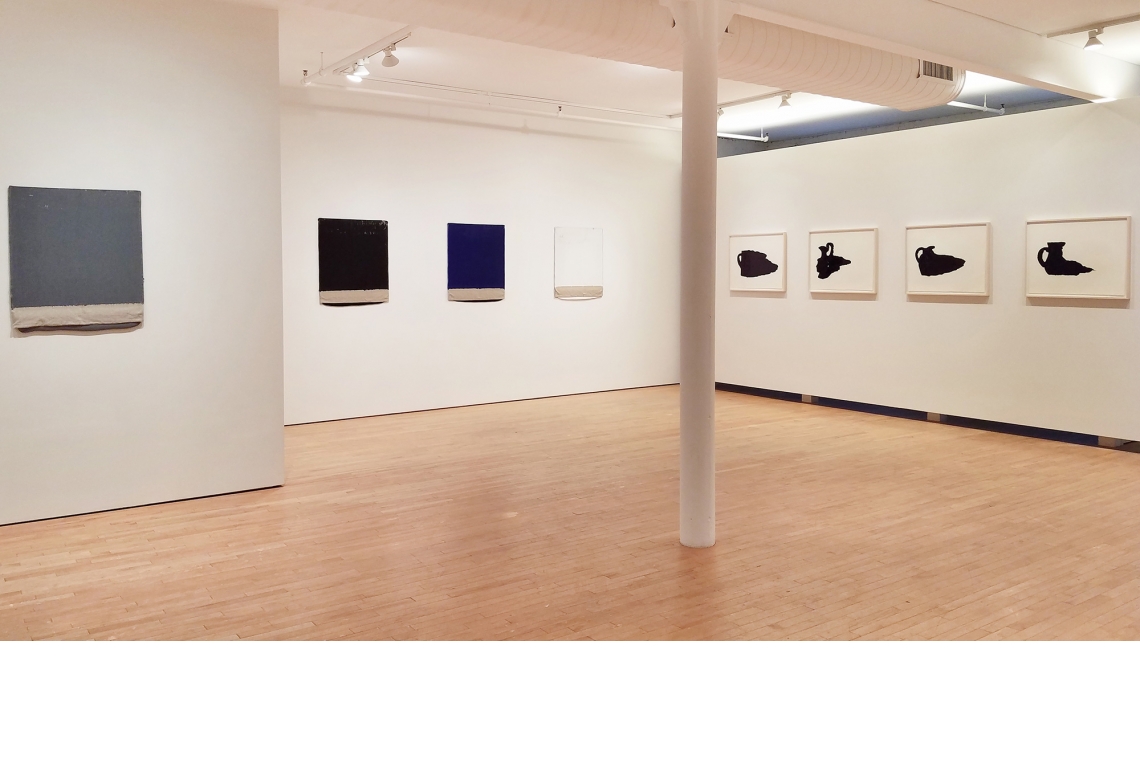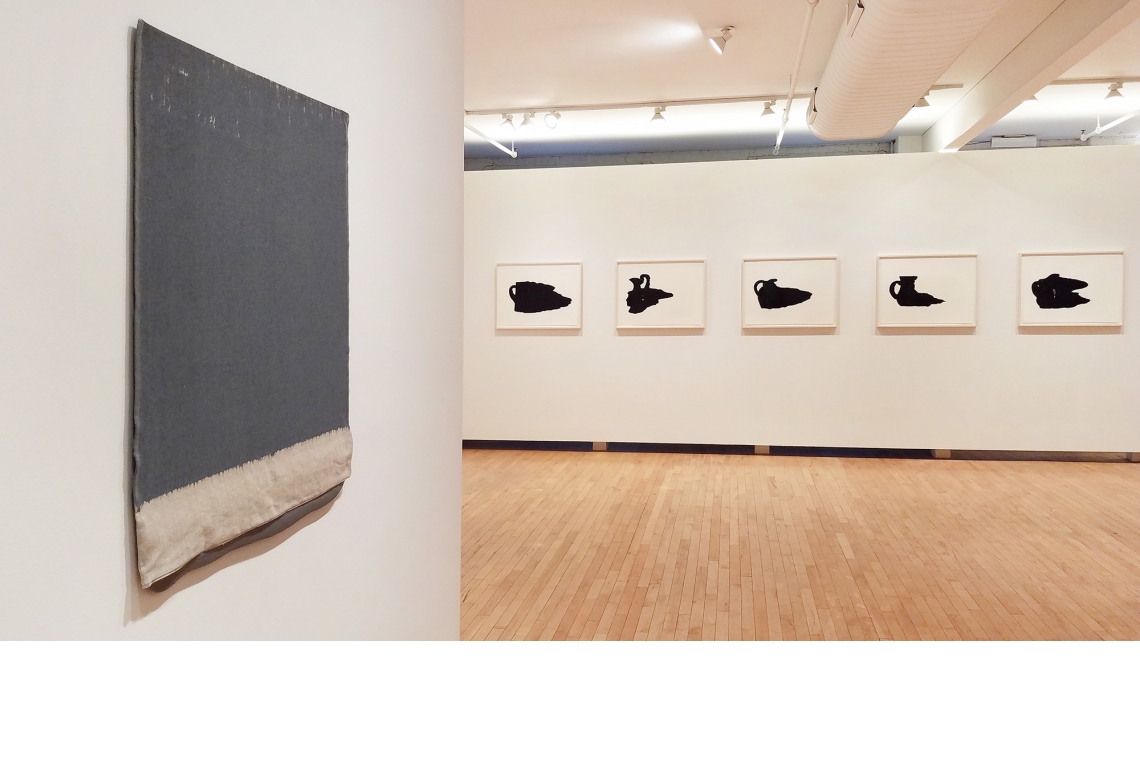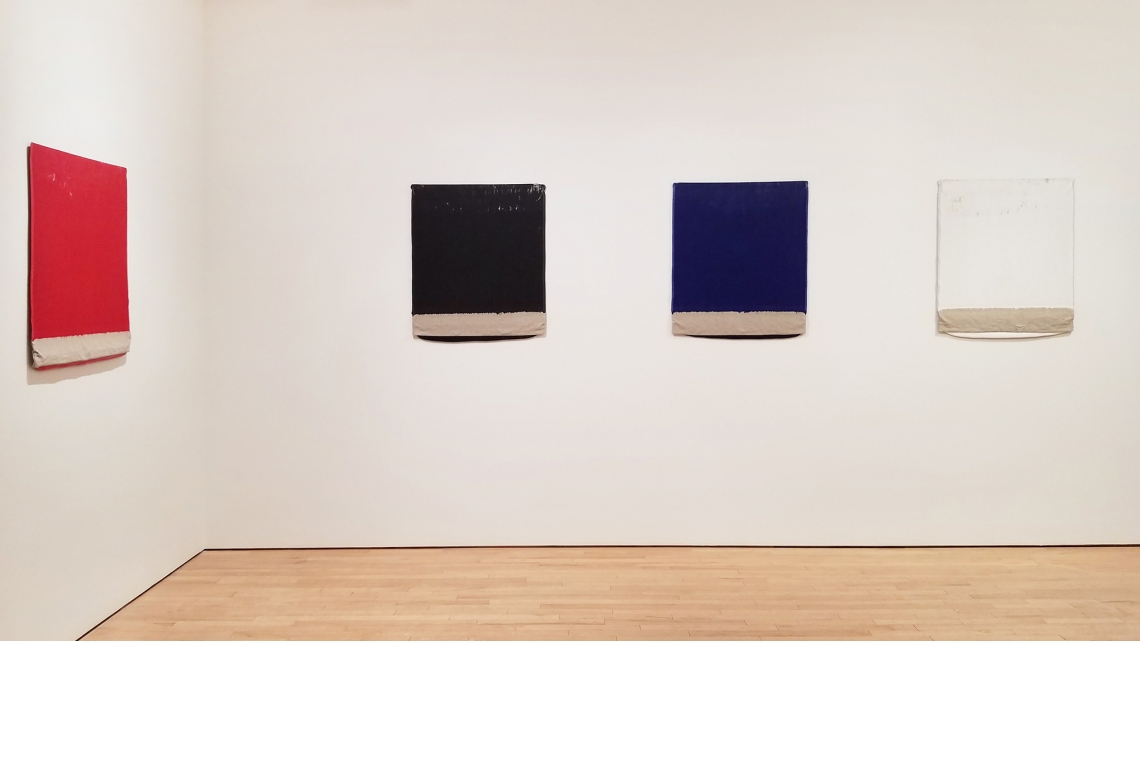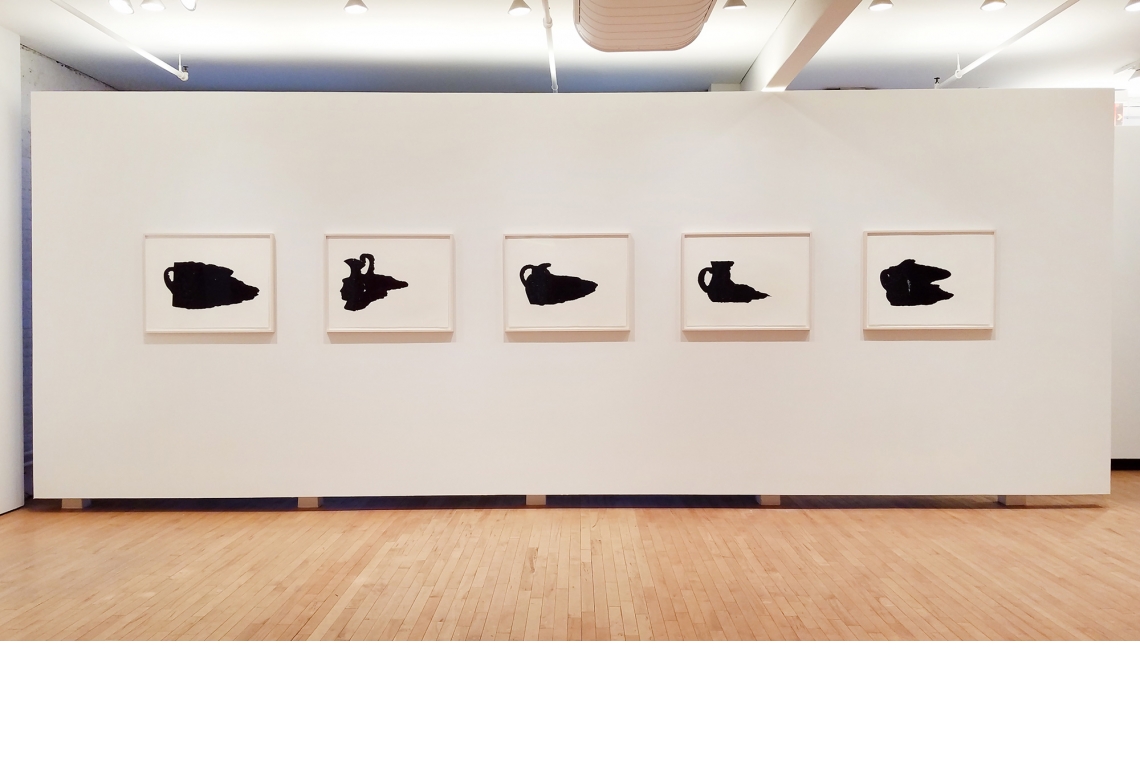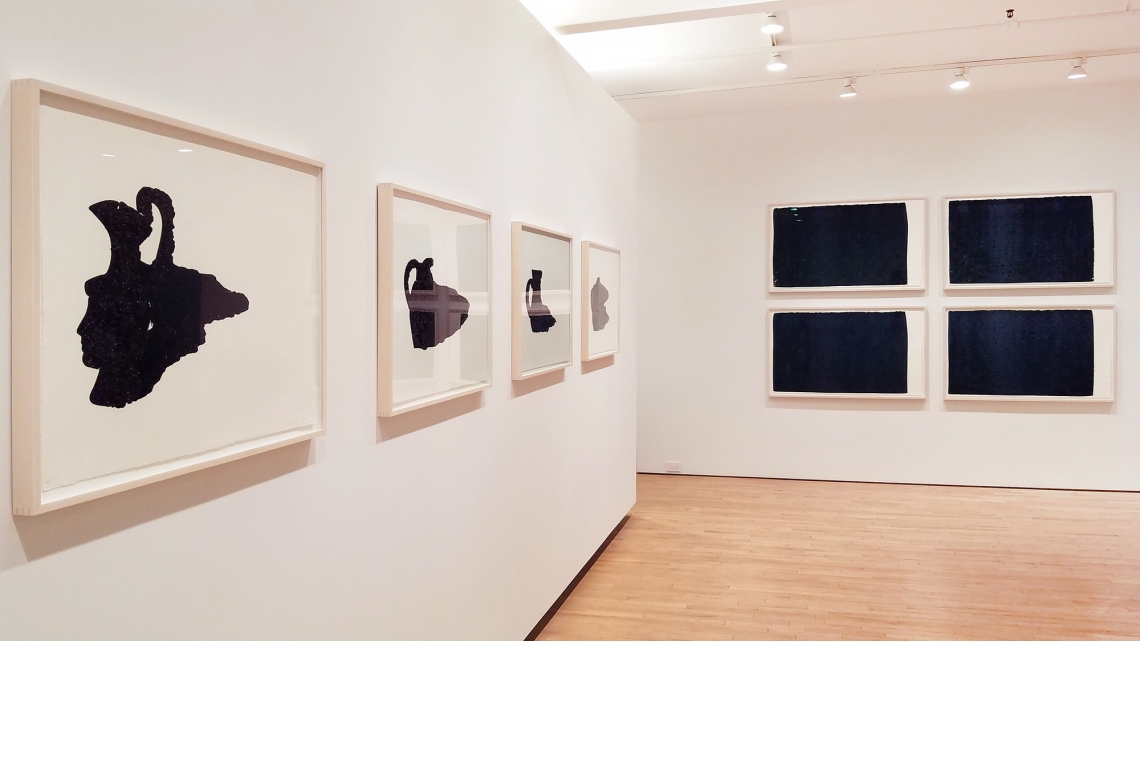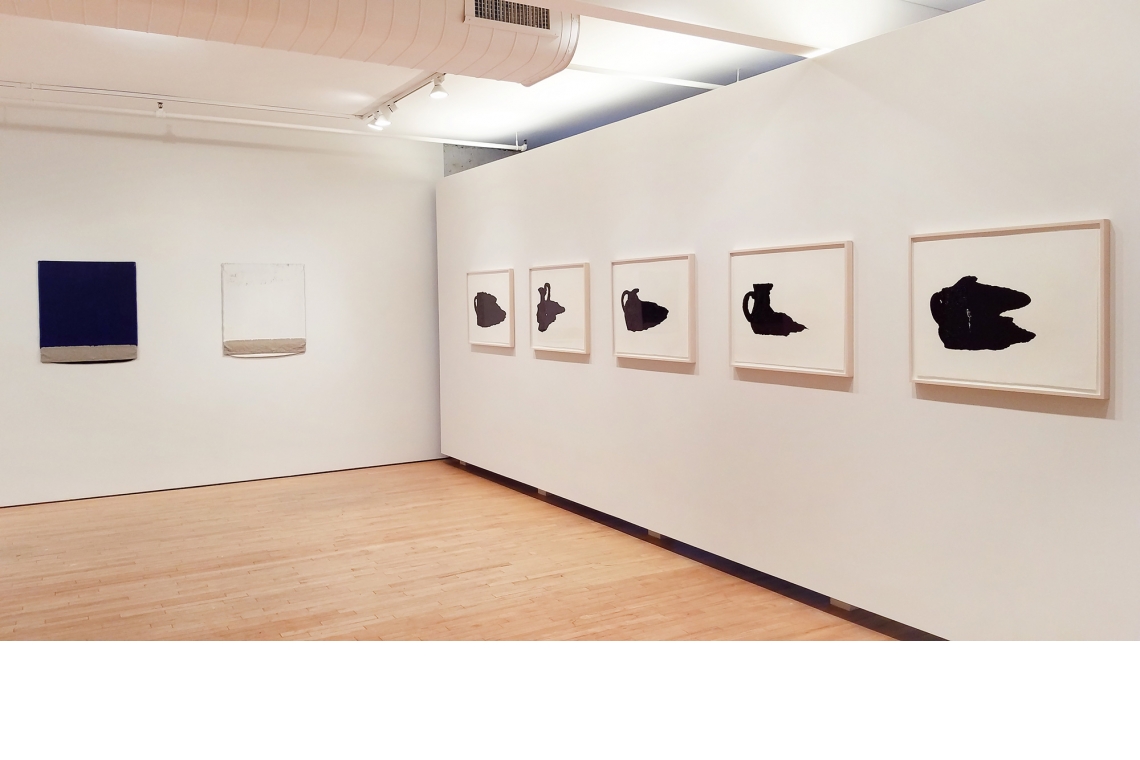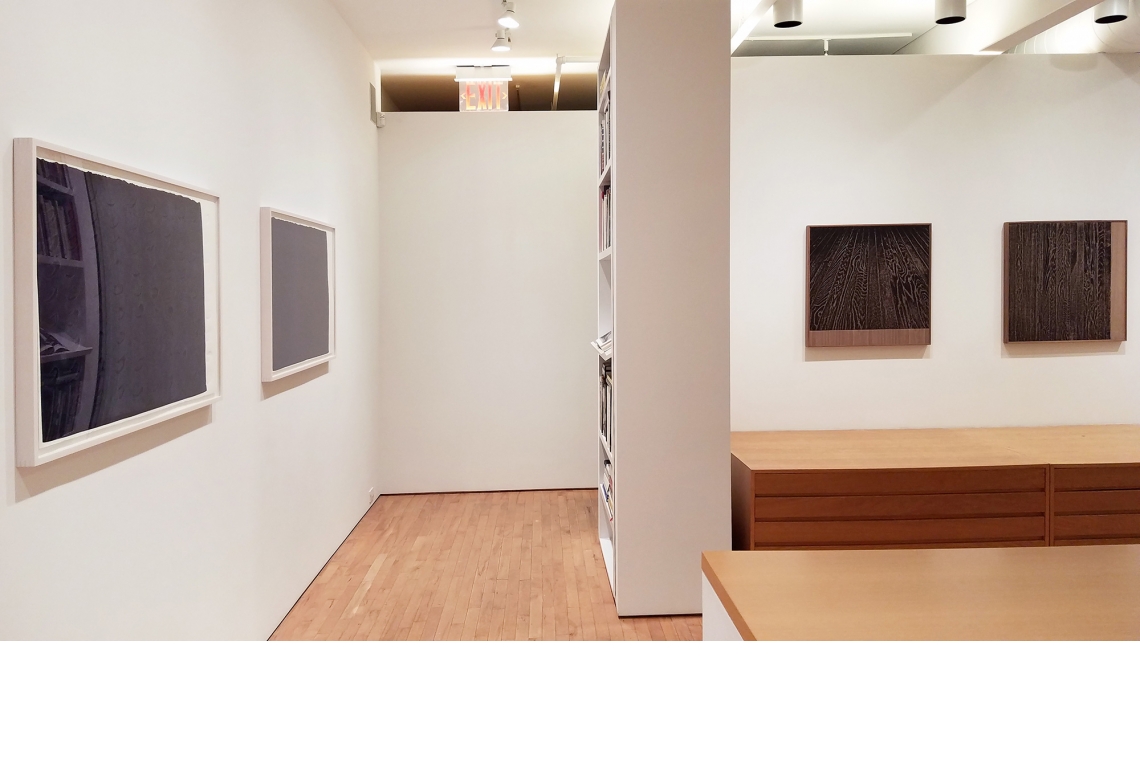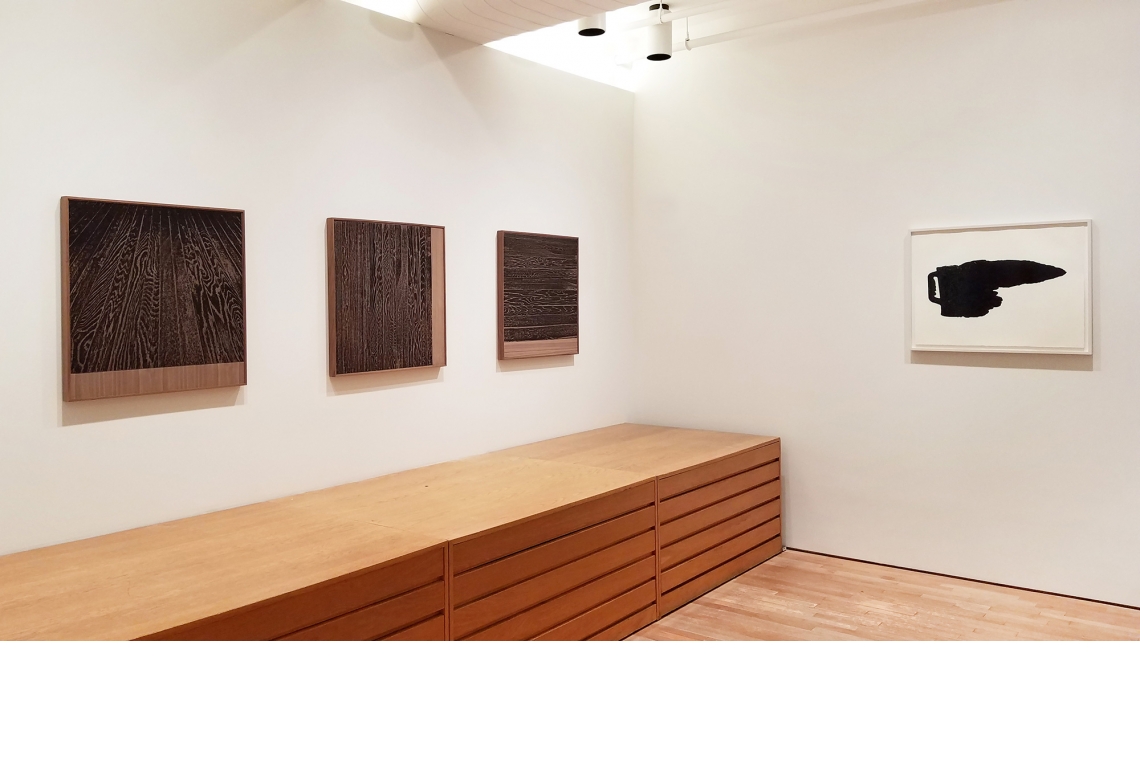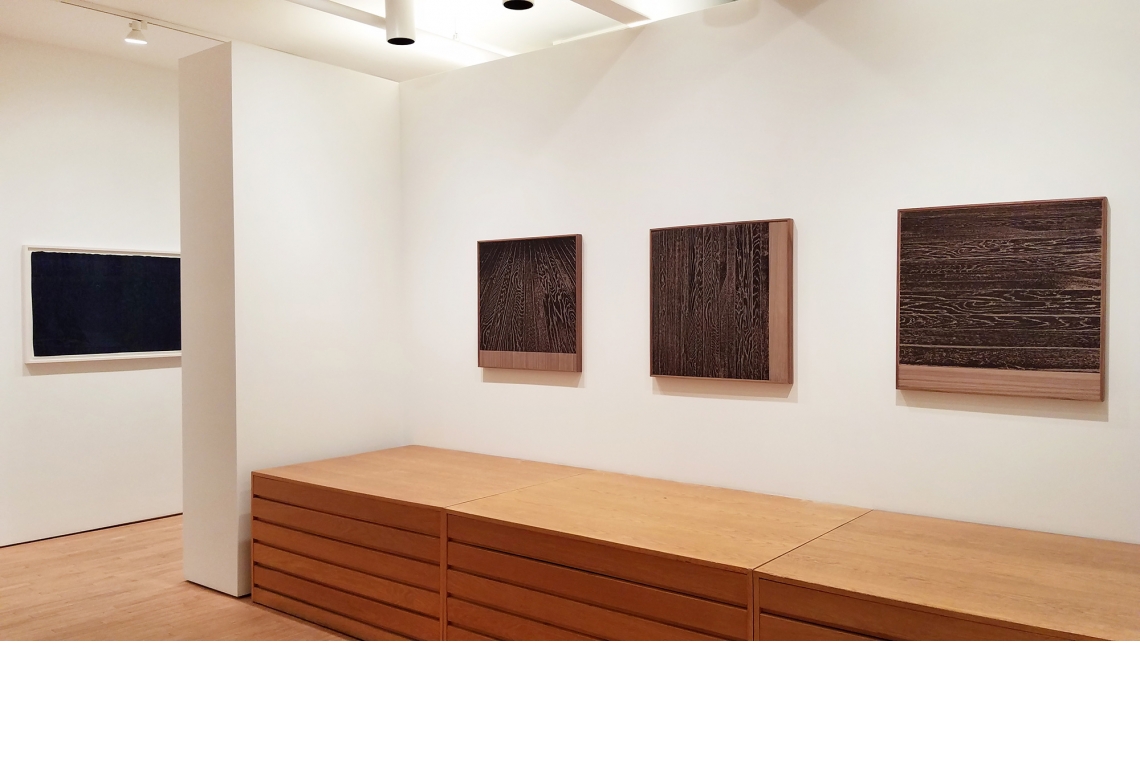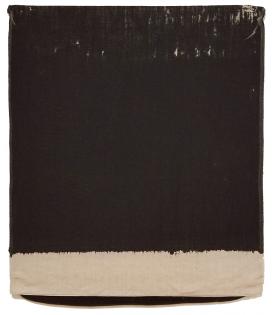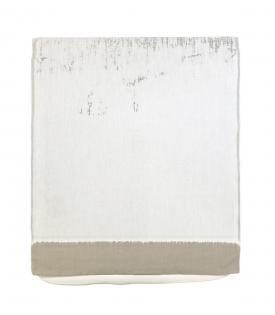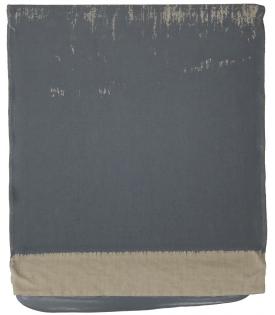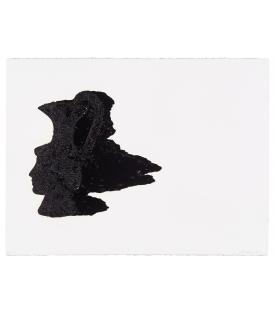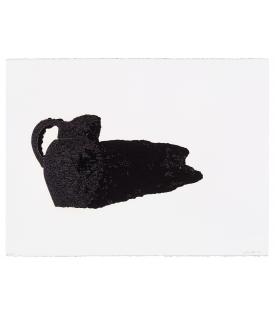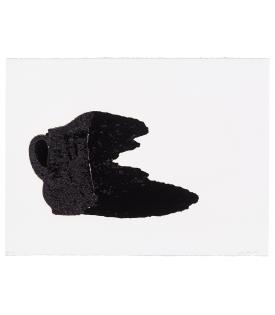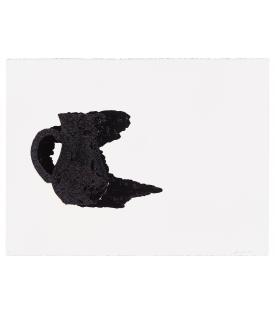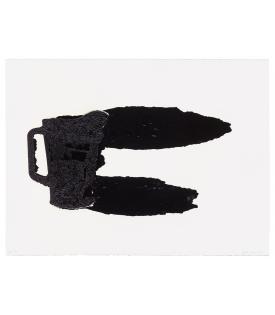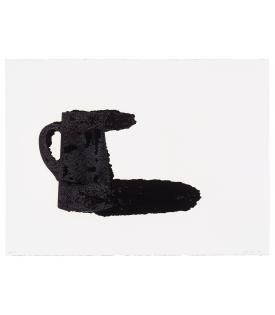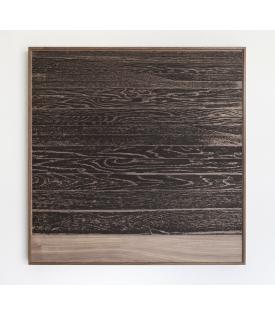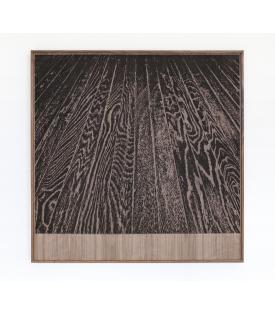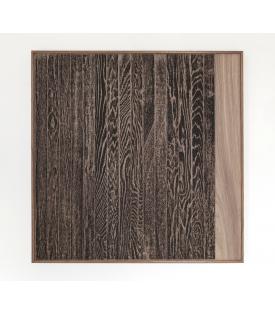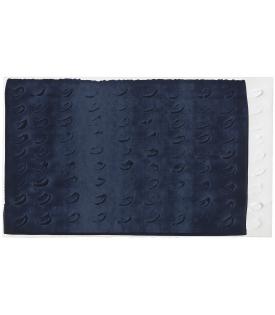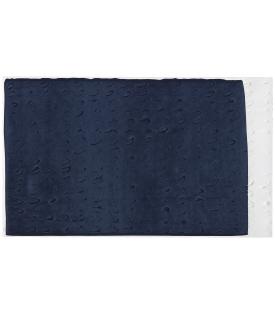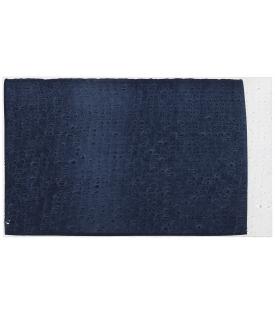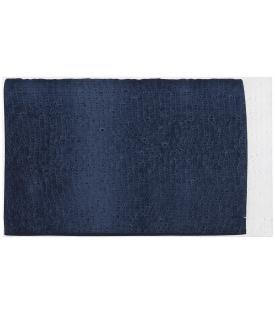Gemini G.E.L. is pleased to announce its second collaboration with Los Angeles-based artist Analia Saban. Analia Saban - Where We Start From is on view through March 10th, and features four different and inventive series utilizing a wide range of techniques. From etching and embossing, to linen canvas bags filled with paint, Saban’s work disrupts standard printmaking practices, and in the process rejuvenates a medium long steeped in technical traditions.
One series, titled Pressed Paint, is a perfect example of the artist’s exploration of the basic building blocks of the artistic vernacular, and sheds light on the essential definitions of painting, sculpture and printmaking. To create this series, Saban first crafted a pillowcase-like sack out of unprimed linen and filled it with one half-gallon of acrylic paint. The pregnant bag was then squeezed through the printing press just far enough so that a thick layer of paint spilled out of the open side. Mounted on the wall, the five versions (cadmium red, ultramarine blue, middle gray, titanium white and mars black) appear frozen in time. Streaks of color saturate the fabric in a cascading pattern, while the paint, peeking out of the bottom of the bag, provides evidence of the process. Not only is this “printed edition” both a sculpture and a painting, it is an artwork that draws our attention to the inside of the object, not just the surface.
While the Gemini printer’s goal is to create a series with the same conditions and measurements for each of the twenty-six Pressed Paint works, imperfection and variation is inevitable. We encounter this same happy predicament in the Pitchers (Spilled Interiors), a series that takes off from Saban’s previous Gemini project Broken Vases (2015). As in Broken Vases, stencils in the shape of various pitchers were filled with ink and the surface was allowed to partially dry. Once the “skin” was firm and curdled, the piece was run though Gemini’s printing press, causing the wet under-layers of the dark blue color to smear out and across the paper in different configurations. In both the Pressed Paint and the Pitchers, Saban removes the hand of the artist to allow the machinery and the nature of the wet ink to dictate the results. The final images are unpredictable and diverse. Some of the resulting contours appear as thin shadows, ghostly outlines around one side of the vase; others are expansive, resembling clouds or puddles, as the spread of ink transforms the image from a traditional still life into a landscape.
Brushstroke Matrix (Payne’s Gray), another remarkable series, challenges our expectations about painting and printmaking, while dancing with notions of positive and negative space. Early in her career, Saban began examining other artists’ paintings like a forensic scientist, tracing each brushstroke and compiling charts of the patterns. In several works, she actually dismantled an entire painting’s surface and reassembled the brushstrokes in new and inventive compositions. To create the Brushstroke Matrix series, the artist first used acrylic gel medium to paint thick brushstrokes in varying sizes, like repeated alphabet letters in a child’s school workbook. These matrixes, once dried and hardened, were blind-embossed onto sheets of white paper. Saban instructed the printers to fill the shapes with vinyl paint, manually wiping the deep-indigo color across the debossed side of the sheet using a squeegee. Conceptually, each Brushstroke Matrix print is a painting made in reverse, with brushstrokes filled in after they’ve been made. In terms of literal definition, the work meets the technical requirements of both a painting and a print, though it seems to transcend both of those categories, eluding any conventional identification.
This radical, conceptual and lightly humorous approach is also demonstrated in the fourth series, Wooden Floor on Wood. Here an image of a hardwood floor has been printed onto a wooden panel. Saban’s interest in the mundane patterns of our visual world and everyday objects that are often overlooked (concrete sidewalk slabs, cracks in house paint, loose threads of fabric) is an essential aspect of her approach. Her investigation of the physical nature of materials encourages a conceptual unraveling of our conventional perspectives. Is it possible that the wood floors in our homes are just a massive wood block print matrix, an abstract artwork waiting to be revealed? Wood Floor on Wood plays with the definition of a print, and, as with all of the works in the show, the medium and traditions of printmaking once again become the artist’s subject matter.
Analia Saban (b. 1980 in Buenos Aires, Argentina) lives and works in Los Angeles. She received a BFA in Visual Arts from Loyola University in New Orleans in 2001, followed by an MFA in New Genres at the University of California in Los Angeles in 2005. Saban’s works are represented in the collections of the Hammer Museum at UCLA; Museum of Contemporary Art, Los Angeles; Los Angeles County Museum of Art; Hessel Museum of Art at Bard College, New York; Norton Museum of Art, Florida; Centre Georges Pompidou, Paris, The Rubell Family Collection, Miami; and the Marciano Foundation Art Collection, Los Angeles, among others. Saban was a Getty Artist in Residence 2015/2016 and her work was also the subject of a solo exhibition at the Blaffer Art Museum at the University of Houston, Texas in 2016.

